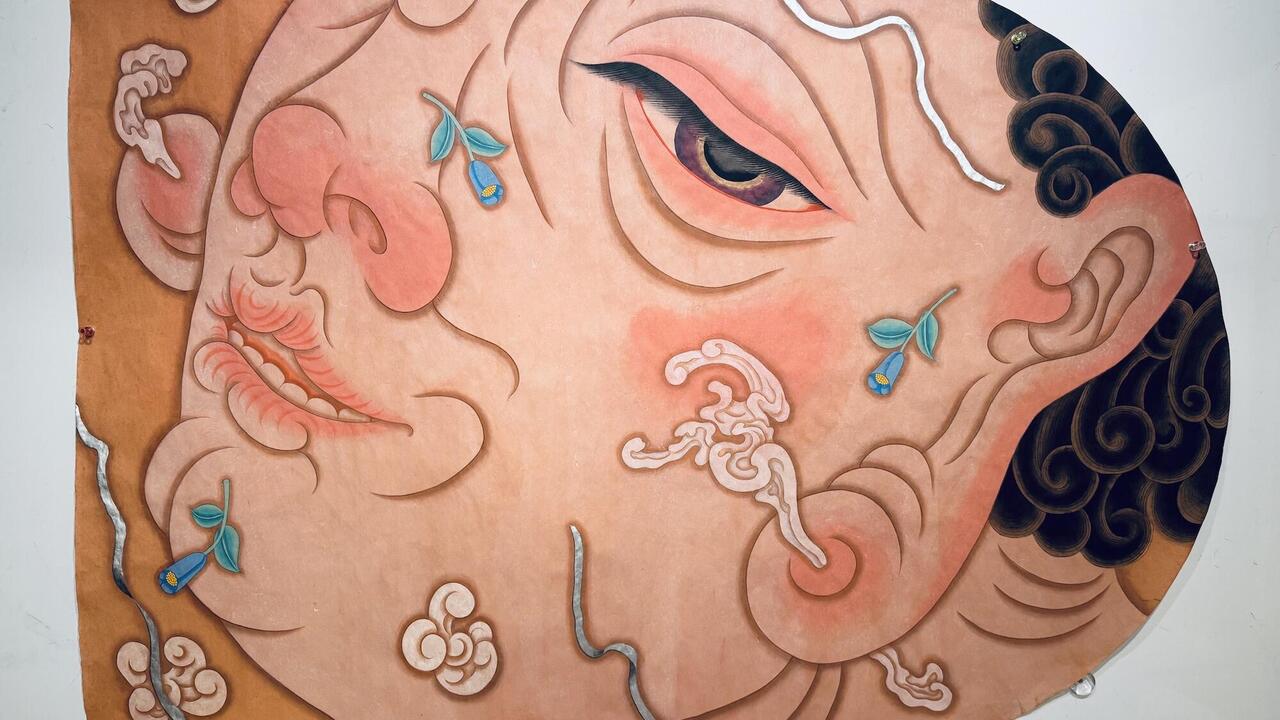Klara Hobza
Electrical Wiring, Diving Lessons and Bird Catching
Electrical Wiring, Diving Lessons and Bird Catching

‘Werner Herzog is my orientation point,’ says Klara Hobza. The Berlin-based artist intends to make the director the centrepiece of her solo show next August at the Kunstverein Springhornhof in Neuenkirchen. In addition to attending a seminar at Herzog’s Rogue Film School in Los Angeles, she obtained his permission to screen Die große Ekstase des Bildschnitzers Steiner (1974; The Great Ecstasy of Woodcarver Steiner, 1976), his film about an eccentric sky-flying champion who used low-tech means to push the physical limits of the sport. After touching on Herzog, my conversation with Hobza ranged from the complexity of an artist’s materials to the excellence of her diving teacher, a retired military diver from Turkey who had also become something of a mentor by preparing her for her ongoing project ‘Diving Through Europe’ (2010–35, projected).
Unlike the male protagonists in some of Herzog’s films, Hobza brings a great self-awareness to her projects. She too wants to test the boundaries of the possible, also perhaps of her own physical capacity, but the personas she creates for herself are neither self-destructive nor deluded. Her projects often involve a grandiose ambition, comparable to dragging a steamship across a hill, as occurs in Herzog’s Fitzcarraldo (1982). If ‘Diving Through Europe’ avoids the crazed ambition of the film’s eponymous hero – Hobza speaks of the project in a matter-of-fact way that can be deceptive – it does entail diving all the way from Rotterdam harbour to the Black Sea through various water channels over a period of twenty or thirty years. Here is where the Turkish diving teacher comes in. For the last two years, she has documented her progress in various formats: mapping the course, detailing her training regime, filming diving exercises. Now a certified diver, the artist made Jedi Master (2011), a short film about her teacher.
Approaching Hobza’s work in terms of the media she uses to plan, document or execute her projects misses the point of her greater ambition, which seems to be not only to engage with the world but also to ask the spectator to engage with her. Although she shares Herzog’s contempt for psychoanalysis and psychological interpretations, her projects do have strong autobiographical references – which may explain the combination of grandiosity and whimsy she brings to them. For example, her series ‘Morse Code Communication (An Improved Attempt)’ (2005) began with a sense of isolation and twelve light bulbs used to send signals from her studio. This project, she says, was initially a reaction to moving from Munich to New York in 2003 and evolved into a massive display of wattage which still kept her low-tech approach: 1,200 light bulbs precariously connected
and plugged into large power strips – all operated by hand-made sliding mechanisms and with the idea of sending a message from her studio into the New York night. Her documentation of the piece – including pictures of herself in tinted goggles, looking out into the night while operating the unwieldy, self-made light-switch contraption – has a poetic charm. On the video footage, the huge wattage can make the light bleed for the viewer, who may experience retinal blurs similar to those produced by staring into the sun. At the same time, considering the relative insignificance of her flashing signals among the countless lights in the city, one becomes acutely aware of the quixotic nature of her project.

Departing America (2009) – a title that hints at another biographical subtext – documents a shipment of crates from a container terminal in Newark to Hamburg harbour, where Hobza picked them up, loaded them onto a makeshift raft and paddled them to the Galerie für Landschaftskunst (which happens to be situated on one of Hamburg’s many canals). There she pulled up the boxes through the window and used the crates to construct her exhibition. Yet any attempt at a comprehensive biographical reading of this work or others is undercut by the different and at times somewhat contrived personas she creates for each piece as she whole-heartedly immerses herself in the acquisition of often arcane skills: from electrical wiring techniques for ‘Morse Code Communication’ to the intensive diving training, or bird catching practices for Nay, I’ll have a Starling (2005–ongoing). This latter piece draws on the release of 60 English starlings in New York’s Central Park in 1890 by Eugene Schieffelin, a member of The American Acclimatization Society who hoped to bring all the bird species mentioned in William Shakespeare’s plays to North America. Hobza’s project involves an ongoing drive to repatriate 60 starlings from New York to London. Her ambition, her creation of artefacts employing specialized knowledge but relying on the self-made – her insistence on art’s prerogative to refuse efficiency – make her a ‘conquistador of the useless’, in the best sense of Herzog’s phrase.















